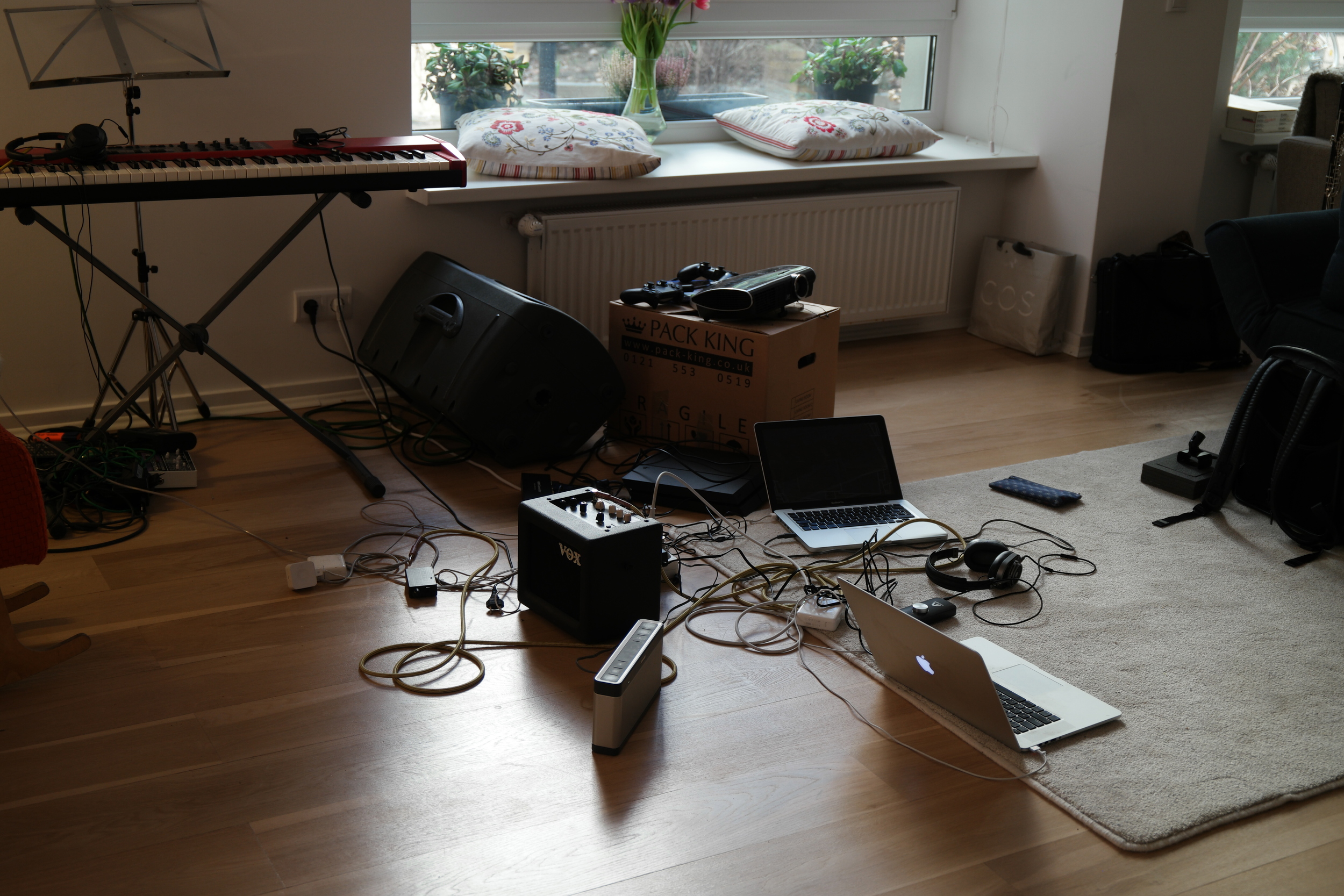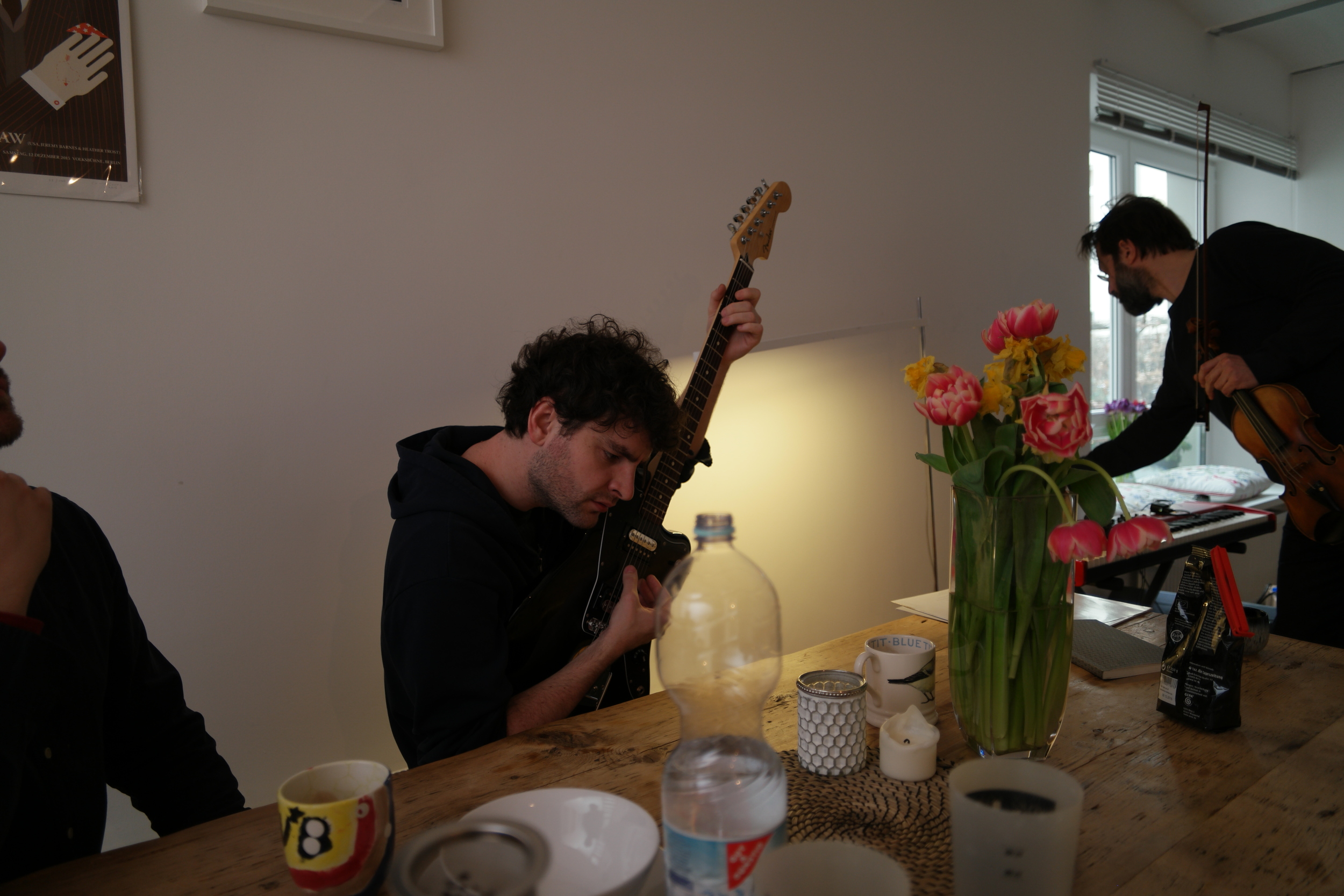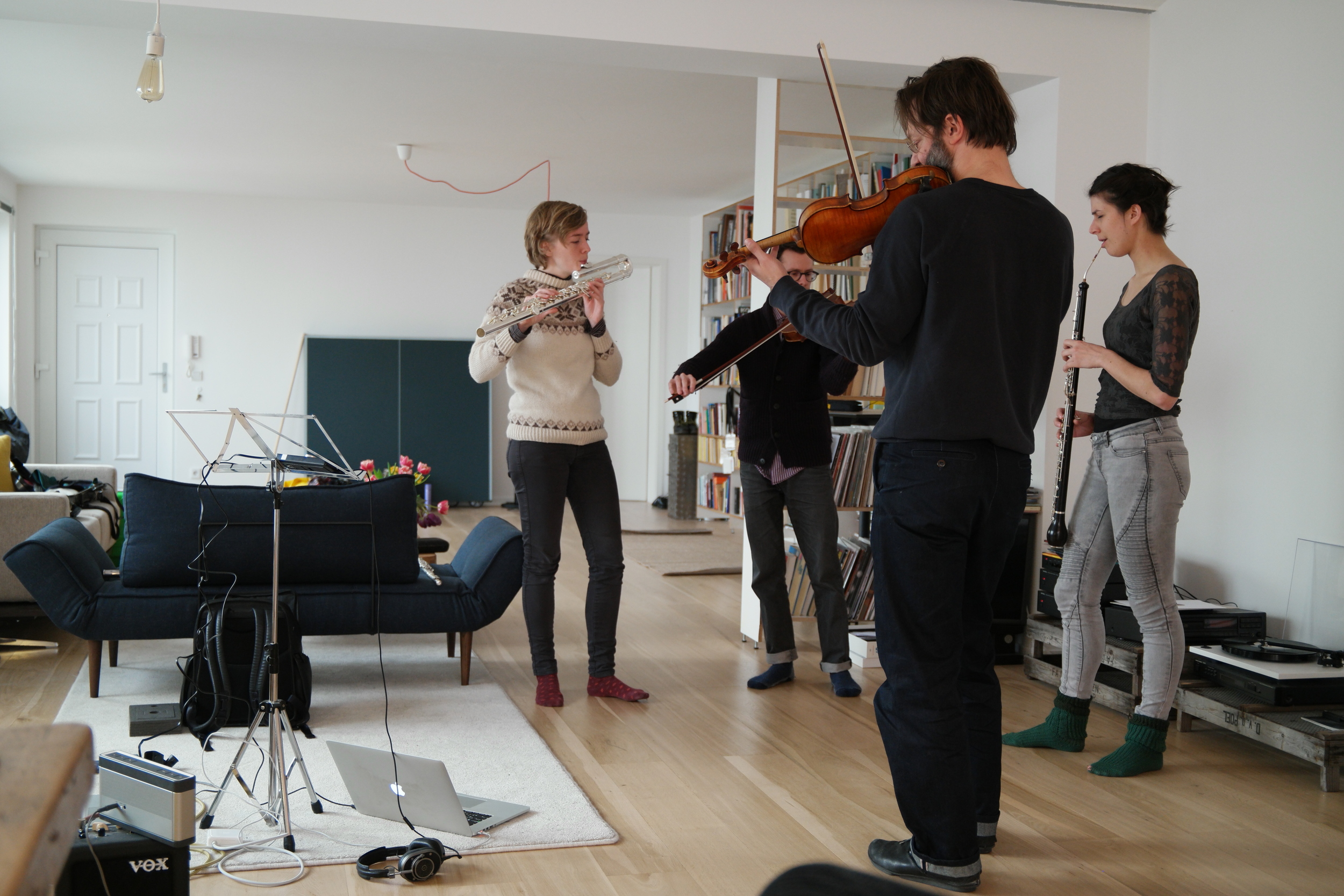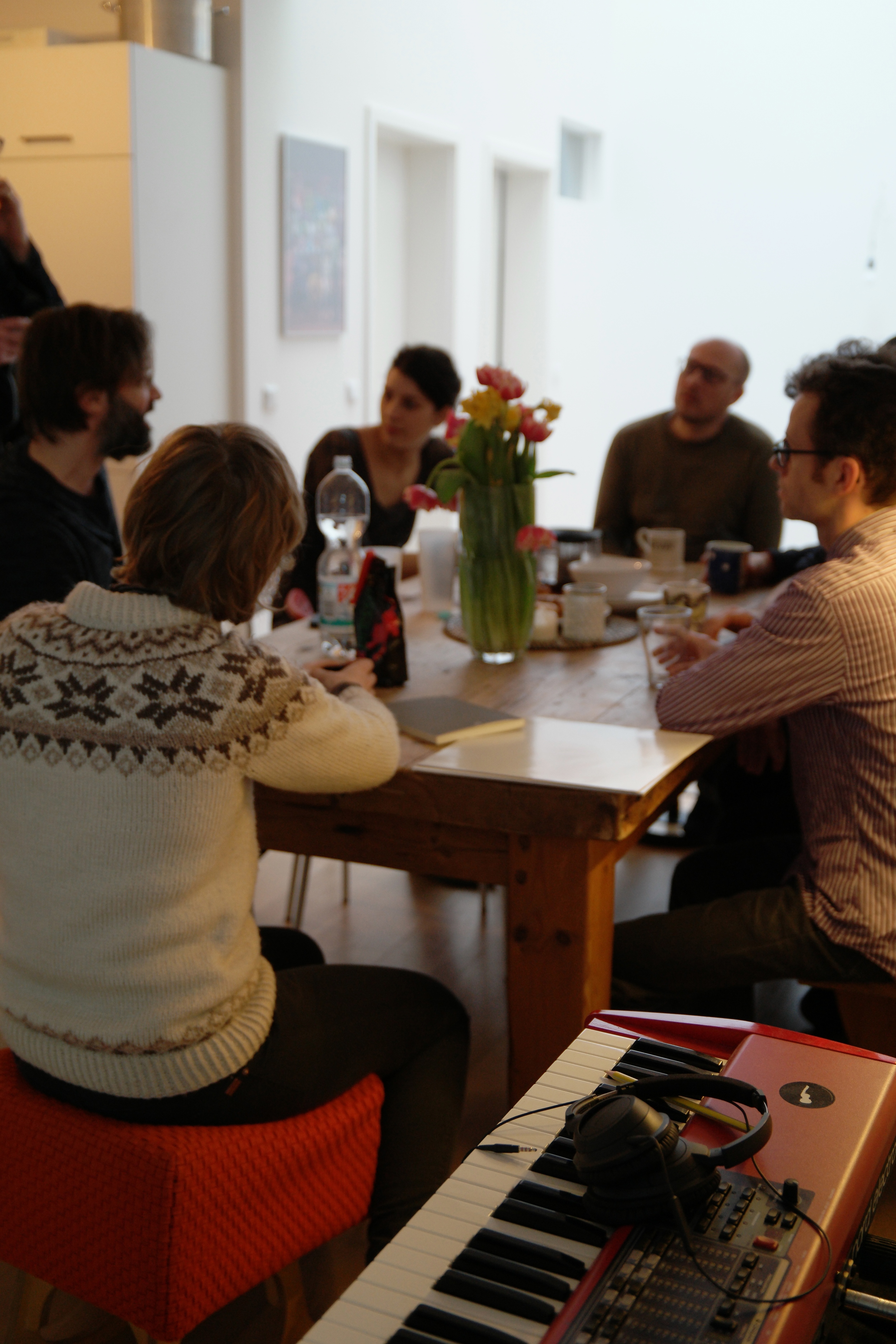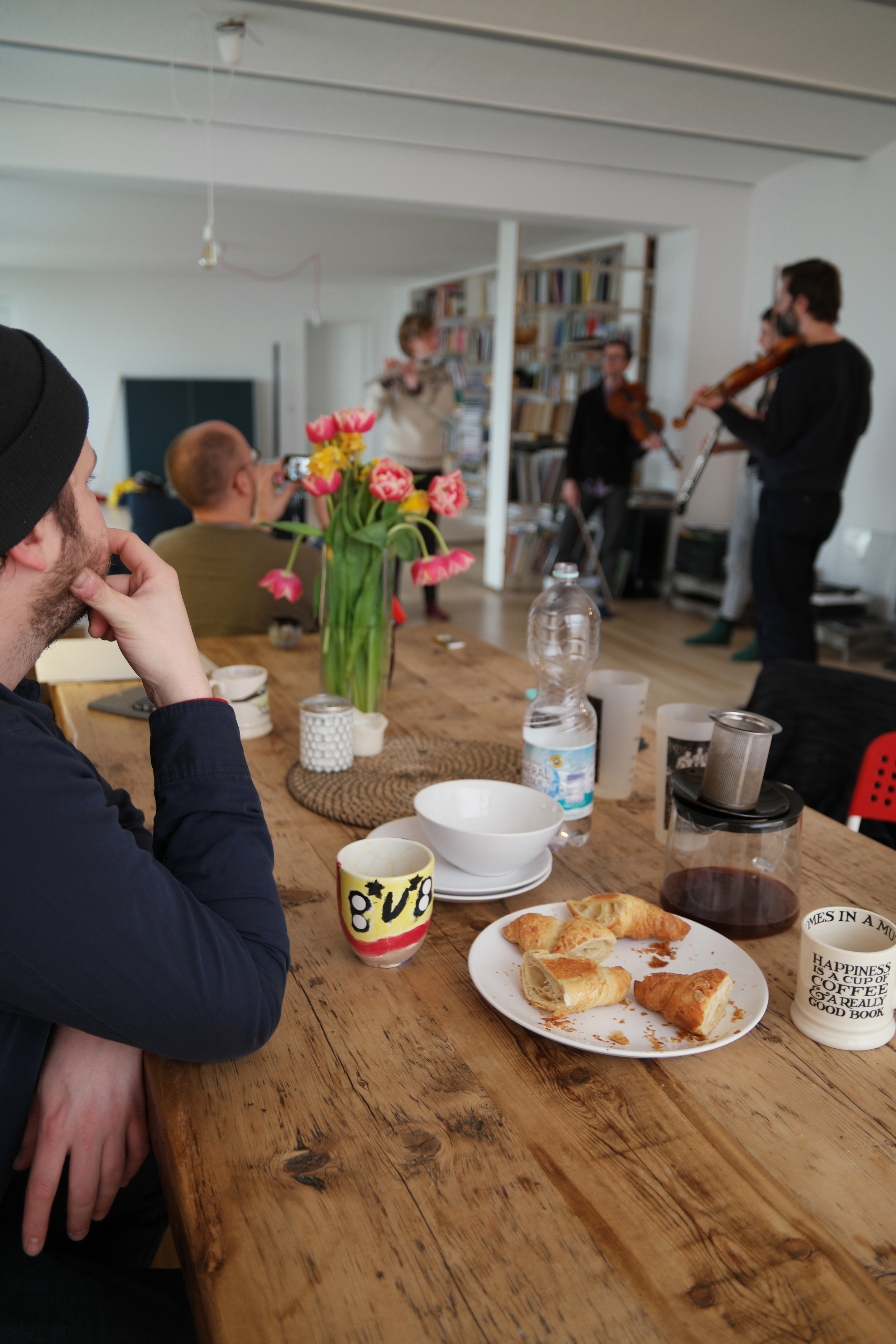"IT'S THE MOST AMBITIOUS PIECE I’VE EVER WRITTEN FOR ELECTRIC GUITAR."
American Composers Forum President John Nuechterlein spoke with Steven Mackey about the June 2016 world premiere of Orpheus Unsung, copresented by Liquid Music and the Guthrie Theater. Labeled a “guitar opera,” the work is a collaboration with Jason Treuting of Sō Percussion and director Mark DeChiazza. The conversation explored how the work was conceived and created, and how the audience might put the various elements into context.
Hear more about the making of Orpheus Unsung at Music in the Making: Steven Mackey with Jason Treuting and Mark DeChiazza at the Guthrie on June 13 at 7:00pm (FREE).
JN: Can you summarize the legend of Orpheus for us and why it appealed to you for this project? Where did the idea come from?
SM: I had the idea for a theatrical piece for guitar and dancer when Mark and I first met in 2009. After several other collaborations Mark came up with the idea of using the Orpheus myth as the skeleton for our original guitar/dancer idea. Orpheus, the son of Apollo, was known for his extraordinary ability to play the lyre. It wasn’t difficult to consider the electric guitar as a modern version of the lyre, and in fact, using the instrument as the story teller for the ancient legend.I’ve written several pieces for electric guitar and orchestra, but never a piece for the electric guitar as an orchestra unto itself. I was fascinated by the concept. The story is classic: Orpheus falls in love with Eurydice, who is bitten by a snake, dies, and falls into the underworld. Orpheus uses his skill on the lyre to convince the gods to let her come back to earth, but sadly he fails a critical test at the last minute and she returns to Hades. The twists of the story fit well with the topography of my music, and I jumped at the chance to find ways of using the guitar to express such a wide range of emotion. It also made sense that if we were going to do an “unsung opera” we should use a familiar story.
Work-in-progress showing of Orpheus Unsung at Carleton College
An opera without words is an unusual form. Tell us how the story gets told.
The guitar itself does the singing. I use a wide range of musical ideas to characterize the many different elements of the story and electronics (effects pedals and loopers) expand the sound palette of the guitar into something more orchestral. Combined with Jason Treuting’s brilliant drumming I don’t think it is much of a stretch to imagine the music as a grand, operatic narrative that follows the story quite closely and linearly. Mark has created an amazing tableau of movement that at times parallels the musical action but generally is less literal, at times cutting against the music’s narrative and at times runs obliquely to it. Video imagery also helps set the stage, and I think it all works really well together.
I take it there are no supertitles if there are no words?
For a while we actually considered inventing words for the guitar’s “arias" but in the end we think the story has the right amount of clarity without them.
Most operas begin with a libretto, but clearly that didn’t happen here. How did the process work?
Mark literally gave me a two-page synopsis of his understanding of the plot points in the Orpheus myth. I surprised both of us by following that “script" closely. In the beginning, Mark and I each worked separately on our vocabularies - our lexicon of materials. Then we started putting them together to see how they worked in tandem. Once we added the dancers it became a process of understanding the timing of each section.
Have you done anything like this before?
No! It’s the most ambitious piece I’ve ever written for electric guitar, and it’s been a thrill ride!
SEE THE WORLD PREMIERE OF ORPHEUS UNSUNG LIVE AT THE GUTHRIE THEATER THURSDAY JUNE 16, FRIDAY JUNE 17 AND SATURDAY JUNE 18 AT 7:30PM
Follow Steve Mackey:
Website: www.stevenmackey.com
Twitter: @mackeysteve
FOLLOW LIQUID MUSIC FOR UPDATES AND ANNOUNCEMENTS:
Twitter: @LiquidMusicSPCO (twitter.com/LiquidMusicSPCO)
Instagram: @LiquidMusicSeries (instagram.com/liquidmusicseries)
Facebook: www.facebook.com/SPCOLiquidMusic/

















